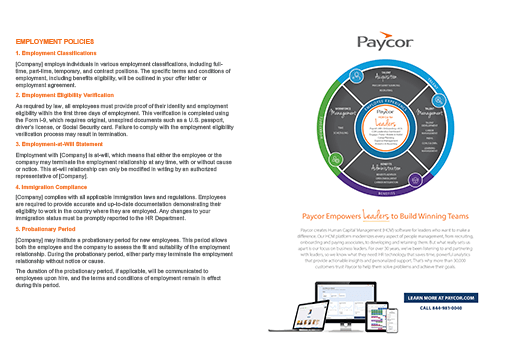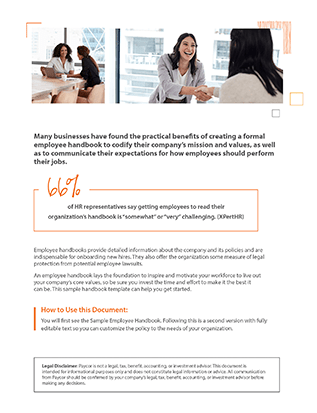An employee handbook is an invaluable tool for HR. It serves as a centralized resource that provides comprehensive information, policies, and procedures to guide employees in understanding their rights, responsibilities, and expectations within the organization. It’s your trusty playbook for effectively managing employee relations.
With an employee handbook, you can clearly outline and communicate important policies such as benefits, leave procedures, and disciplinary protocols. This promotes transparency, consistency, and fairness across the organization. It also helps mitigate legal risks by ensuring compliance with employment laws and regulations, covering crucial topics like equal opportunity, anti-harassment, and non-discrimination.
Beyond compliance, the employee handbook enhances communication, fosters a sense of belonging, and promotes positive employer-employee relationships. By setting clear guidelines for behavior, performance expectations, and conflict resolution, the handbook cultivates a supportive work environment.
If you’re not sure how to create or revise your employee handbook, we’ve got you covered with this handy employee handbook template that you can tailor to your organization’s unique needs.











